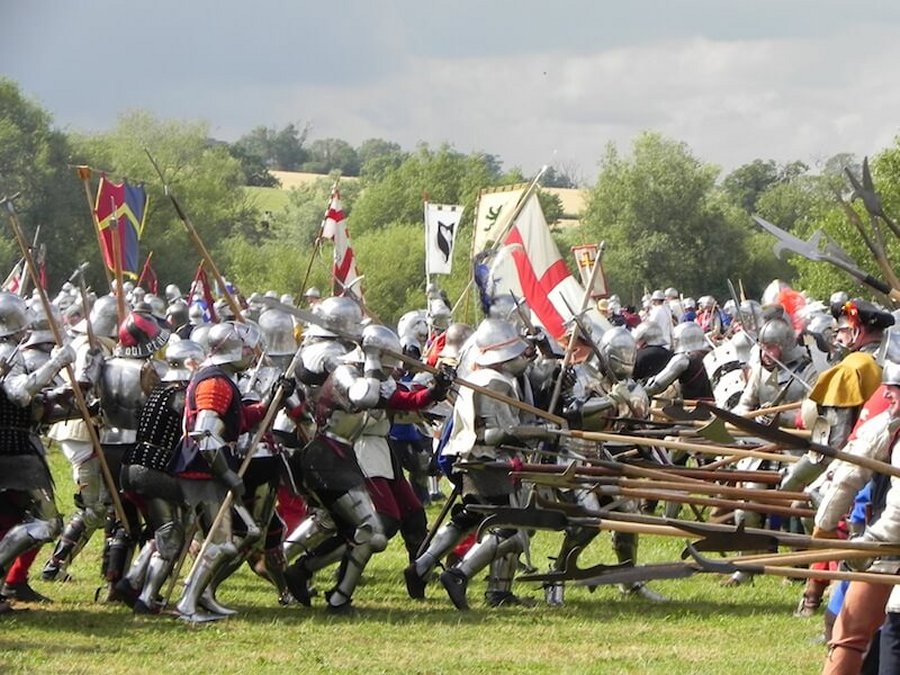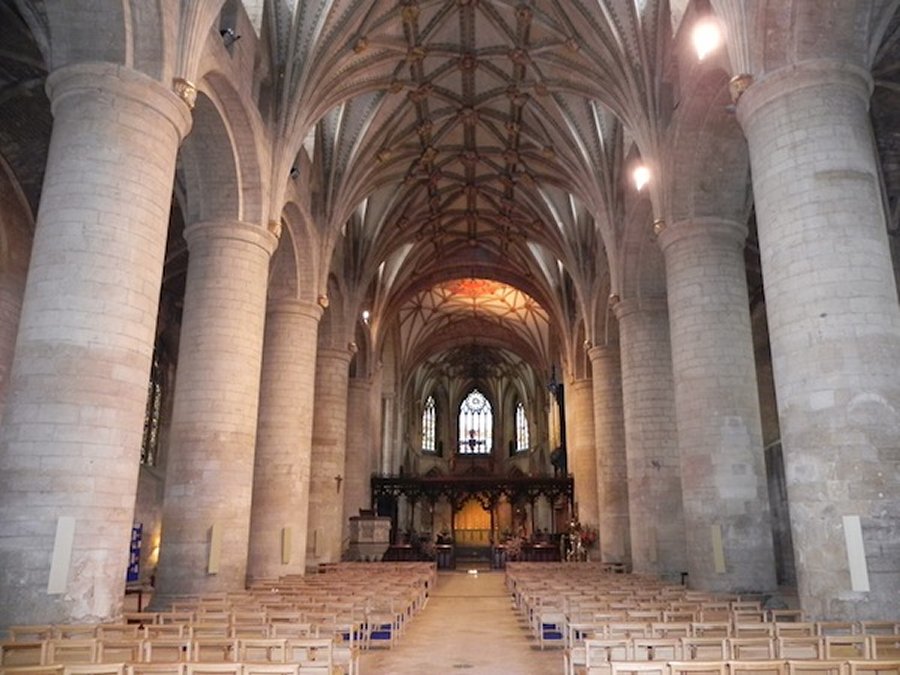MessageTo Eagle.com – One of the decisive battles of the Wars of the Roses took place on May 4, 1471. It was the Battle of Tewkesbury, a historic riverside town in Gloucestershire.
The prize, for which they were fighting was the Throne of England.
‘The Wars of the Roses’ is the name given to many battles between those who supported the House of Lancaster and those, who supported the House of York. This particular day marks the downfall of the House of Lancaster and the dominance of the House of York.

Following the previous month’s defeat at the Battle of Barnet, the Lancastrians were seeking to cross the Avon there and thence on into Wales over the Severn, to join forces with Jasper Tudor. King Edward IV, however, was quickly informed about their tactical maneuver.
He sent 5,000 Yorkists to intercept and confront the enemy’s army and his army of soldiers had camped the night before at the village of Treddington, two miles from Tewkesbury. The clash between the two sides came in fields and lanes away from the Abbey, nearer to what is now Gupshill Manor.
The 6,000 strong Lancastrian army under the command of the Duke of Somerset, took up a defensive position a mile south of the town of Tewkesbury. Tewkesbury Abbey was just behind the Lancastrian center, in the days when of course it was still a functioning abbey.

The leaders of the Lancastrian force decided not to try to get the thousands of men and their equipment over the causeway. Believing that they had superior numbers they decided to make a stand at Tewkesbury. The Yorkists waited overnight in the village, setting out in pursuit of their opponents on the 4th. One shrewd piece of strategy was to deploy a troop of 200 horsemen on the wooded hillside of the Deer Park.
The fighting eventually began on the day of May 4, with both sides set out in three divisions.
It was the sudden move of the Duke of Somerset’s men which marked the beginning of the end for the Lancastrians. Unsupported by the other two divisions Somerset drove his troops in the center with disastrous consequences.
The panic that set in amongst the Lancastrians fleeing to Tewkesbury and hoping for sanctuary in the Abbey.
The forces loyal to the House of Lancaster were completely defeated by those of the rival House of York under their monarch, King Edward IV. The Lancastrian heir to the throne, Edward, Prince of Wales, and many other prominent Lancastrian nobles were killed during the battle or dragged from sanctuary two days later and beheaded in the market-place at Tewkesbury.
This decisive battle completely established Edward IV on the throne.
MessageToEagle.com






